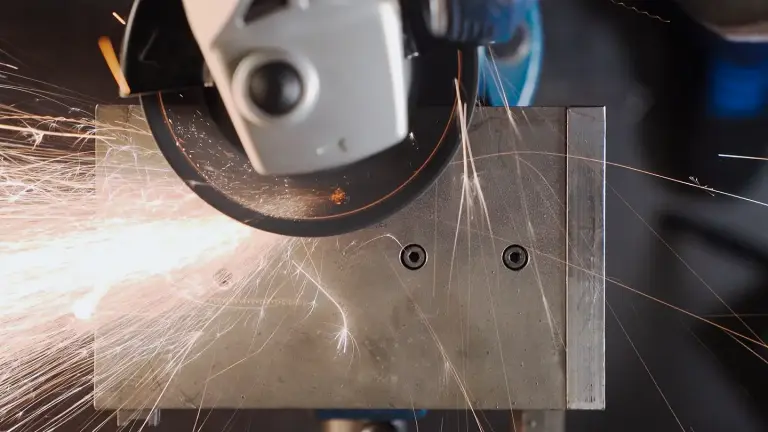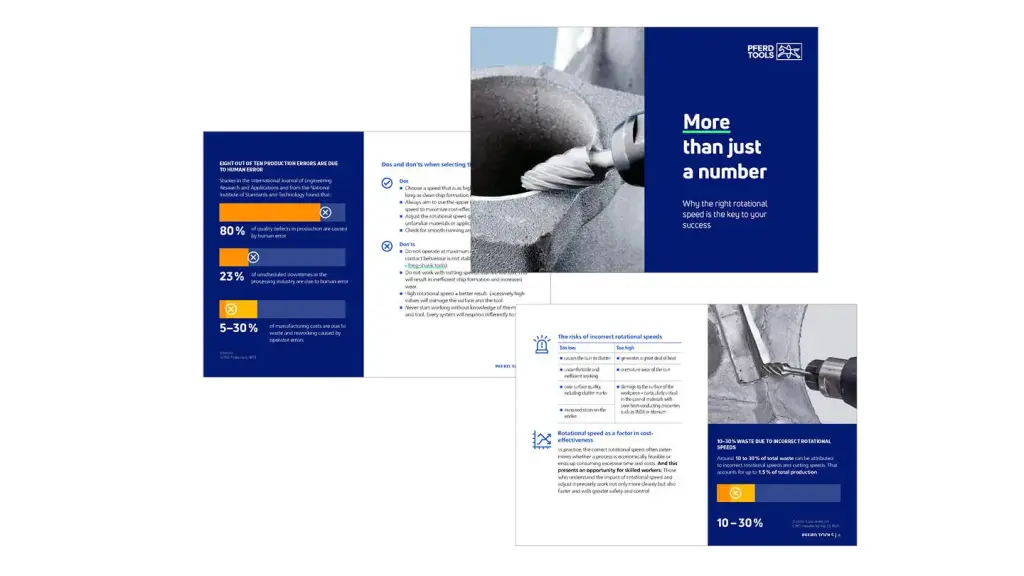
Users from industry and professional trades are increasingly talking about grinding with pinpoint precision. What does it involve, and what potential does it offer for coarse stock removal?
Grinding is one of the most common processes used by industry and professional trades. Hardly any (semi-finished) product leaves the Production department without first having been ground as part of the manufacturing process. That is why manufacturing companies are increasingly re-imagining this process step, and recognizing that it offers the potential to improve quality and efficiency.
In addition to choosing the best possible grinding tool and drive (always a critical combination for ensuring the overall process is cost-effective), the process itself also plays a crucial role. As such, grinding with pinpoint precision is becoming increasingly important for coarse stock removal.
What does grinding with pinpoint precision involve?
Whenever we talk about “grinding with pinpoint precision”, we are referring to a high-precision process where a grinding tool is targeted at specific areas of a workpiece. The aim is to work on the area being machined – and only that area – as precisely as possible. This approach has a number of benefits:
- Surrounding areas are not accidentally damaged
- There is less need for reworking
- It prevents heat building up in large areas of the workpiece
- It saves time, which reduces costs and makes the process more cost-effective
What potential does grinding with pinpoint precision leverage?
Grinding with pinpoint precision is advisable in many industrial applications, from tool and mould-making to the aviation and aerospace industry, automotive manufacturing, the electronics industry, and the equipment, container and steel construction industries.
Karsten Herrmann, Product Manager at Marienheide-based grinding tool specialist PFERD TOOLS, knows how having precise control over the grinding process brings overarching benefits, in particular for coarse stock removal where stock removal tends to be higher: “Even if we have the ideal combination of tool and drive, the amount of material to be removed is always the defining factor for coarse stock removal.” The challenge here is to focus the process on the necessary machining steps, prevent mistakes that would require additional steps to resolve, and narrow down the machining work to the specific result that the user wants to achieve. “Grinding with pinpoint precision helps us no end with this,” says Herrmann.
What does grinding with pinpoint precision require?
“If we want to work with this level of precision, we first need a suitable abrasive in the correct version and grit size for the material being machined and the desired machining result. For example, we need to consider the planned stock removal rate and the desired surface quality,” explains Herrmann. “It is also important to choose a very handy, dimensionally stable tool. Naturally, it must then be teamed with a drive offering the appropriate rotational speed and power.” In addition, the user needs to have a clear view of the machining process: “If we can clearly see what we are doing, we can effectively adapt our approach to achieve the results we need,” highlights the Product Manager.
When performing grinding work, users usually check their progress by grinding over the area in a swinging, oscillating motion so that they repeatedly get a glimpse of the machining results achieved so far. “However, doing this also removes material in places where it is not intended or required,” warns Herrmann, “which then leads to reworking and corrections that are completely avoidable.”
To solve this problem, PFERD TOOLS pursued the idea of a transparent grinding disc that ensures the user can see and control the grinding process without interrupting their work. “Since it is not possible to make a transparent grinding disc, we opted to insert a viewing window. When the disc rotates it appears transparent, which enables us to “see through” to the process. We can see in real time what is currently happening on the workpiece and can work very precisely until we achieve the desired machining results, with all the benefits that brings.”
Ideal for grinding with pinpoint precision thanks to viewing window
PFERD TOOLS calls this grinding disc CC-GRIND VIEW. Thanks to its dimensional stability, it enables users to grind material with pinpoint precision and monitor their work continuously through the viewing window.
“Our end users confirm that the grinding process has literally become ‘more transparent’ for them and that they achieve the desired machining results faster and more reliably,” reports Karsten Herrmann – “without delays, without reworking; they hit the mark, as it were.”
The CC-GRIND VIEW is part of the CC-GRIND family from PFERD TOOLS. The grinding discs in five different versions (CC-GRIND ROBUST, SOLID, FLEX, STRONG and now also VIEW) are suitable for a wide range of requirements. For surface grinding, work on weld seams, chamfering and deburring, these tools have long since made a name for themselves thanks to the functional and ergonomic advantages they offer. When combined with the innovative VICTOGRAIN abrasive, CC-GRIND grinding discs are among the most powerful grinding tools on the market.
